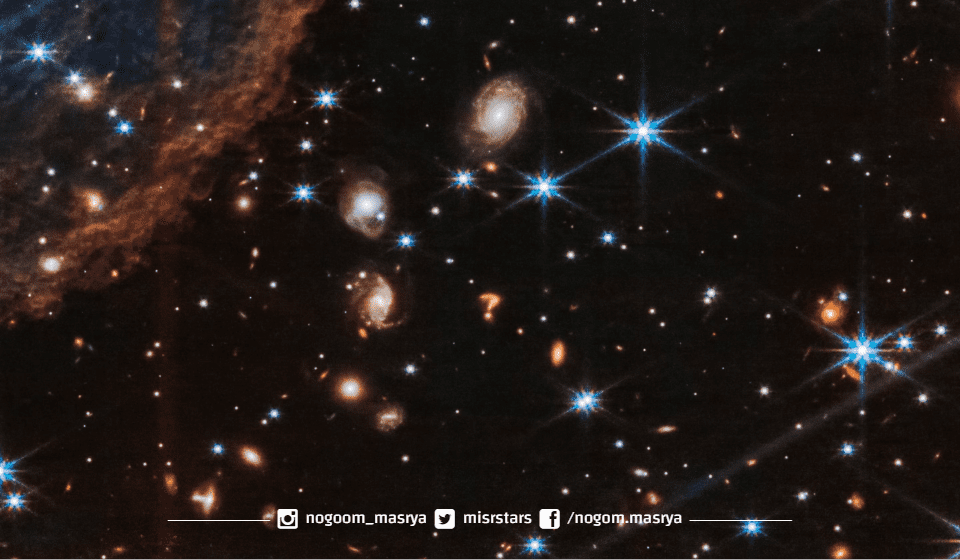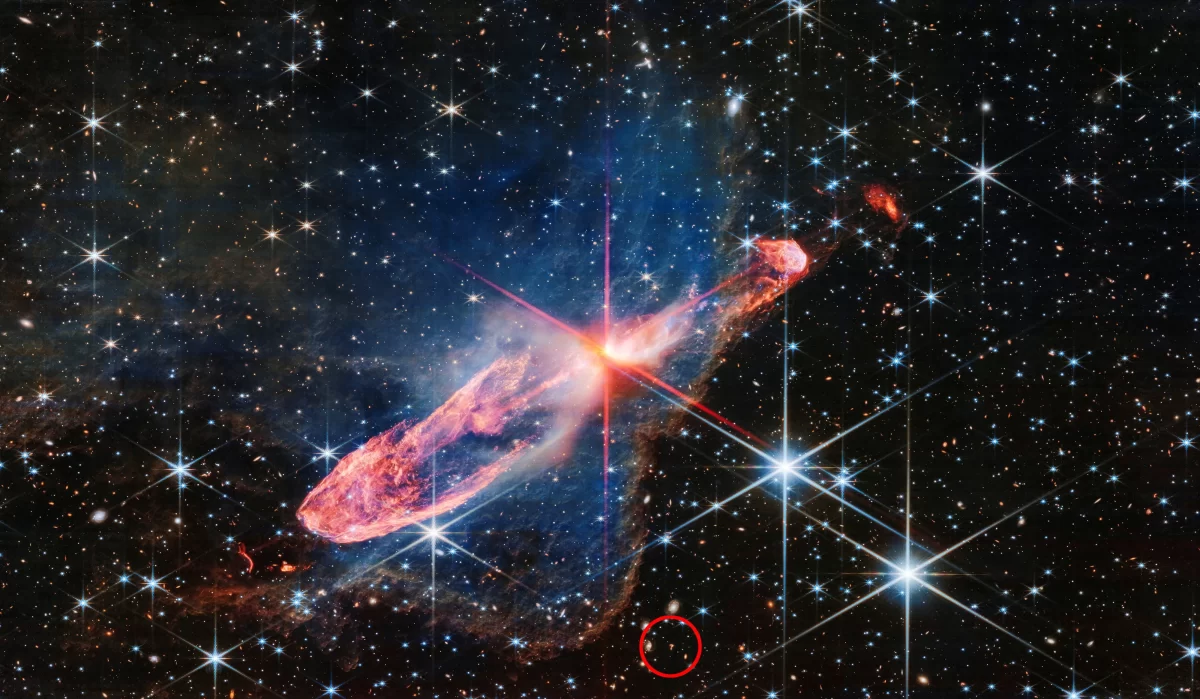Cosmic Question Mark: Mysterious Object Captured by NASA’s Webb Space Telescope Piques Curiosity
NASA’s James Webb Space Telescope recently caught an enigmatic cosmic object resembling a glowing question mark that photobombed its latest capture. The object’s origins and composition remain a mystery, although scientists have some intriguing theories.

The original near-infrared image, unveiled on July 26, depicted a pair of nascent stars — Herbig-Haro 46/47. These stars, still in their active formation phase and orbiting each other, are located 1,470 light-years away in the Vela constellation, positioned within the Milky Way galaxy. Ever since their discovery in the 1950s, they have been a subject of study for various space and ground-based telescopes.
Webb’s high sensitivity and resolution provided the most detailed image of these stars to date, offering a glimpse of the universe through longer wavelengths of light than other space telescopes. This spectacular image, however, was somewhat overshadowed by the mysterious question mark-shaped object appearing in the background.
Matt Caplan, assistant professor of physics at Illinois State University, rules out the possibility of the object being a star within our galaxy. “Stars always have these really big spikes because they are point-like. It’s called diffraction from the edges of the mirrors and the struts that support the camera in the middle,” he explains. The Webb telescope usually shows six or eight stellar “prongs”, but none are evident in this case.
Theories and Cosmic Questions
Christopher Britt, an education and outreach scientist at the Space Telescope Science Institute, which oversees Webb’s scientific operations, suggests that the object could be a merger of two galaxies. Situated billions of light-years away, these galaxies would be much farther than Herbig-Haro 46/47.
Britt explains, “Many, many galaxies outside of our own Milky Way sometimes collide with their near neighbors as they grow and evolve over cosmic time. When that happens, they can get distorted into all kinds of different shapes — including a question mark, apparently.”
Experts believe this might be the first sighting of this particular object, but similar phenomena have been observed previously, such as a backward question mark formed by the Antennae Galaxies in the Corvus constellation. Britt further elaborates that such interactions are common in the history of galaxies, but they are transient.
Caplan emphasizes the dynamic nature of the cosmos, stating, “The sun is moving as it orbits the galaxy, and the galaxy, being made of stars, is moving whichever direction gravity pulls it.” He also reminds us of our own galaxy’s destiny, which is set to merge with the Andromeda galaxy in about 4 billion years, although the shape that will be formed remains uncertain.
Britt suggests that the question mark’s shape might be a result of gravitational interaction during the galaxies’ merger, creating a “tidal tail” where a stream of stars and gas is ripped off and flung into space.
To better understand this celestial curiosity, scientists would need to gather more spectroscopic data, revealing information such as its distance and chemical makeup. However, Caplan likens the situation to finding a chicken tender that looks like George Washington, implying that such an investigation, while possible, might not be a priority.




